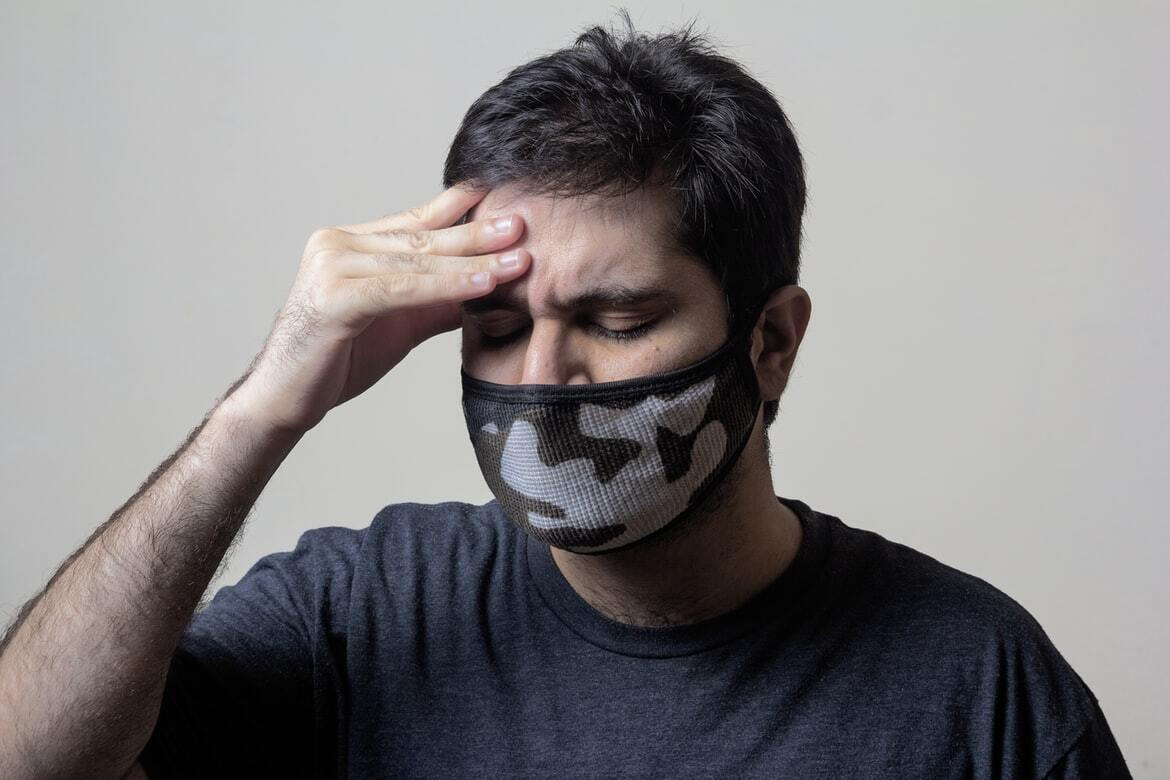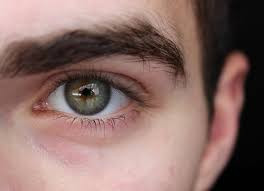Definisi
Oklusi pembuluh darah vena retina adalah sebuah kondisi ketika pembuluh darah balik pada mata tersumbat. Kondisi ini merupakan salah satu penyebab kehilangan penglihatan yang terjadi secara tiba-tiba tanpa nyeri maupun mata merah. Angka kejadian oklusi pembuluh darah vena retina adalah 5,2 kejadian per 1.000 individu.
Penyebab
Oklusi pembuluh darah vena retina dapat terjadi akibat tiga hal utama, yaitu: kerusakan pembuluh darah, perlambatan aliran darah, dan kemampuan penggumpalan darah yang berlebihan (hiperkoagulabilitas). Kerusakan pembuluh darah dapat terjadi akibat penyakit-penyakit yang terkait dengan jantung dan pembuluh darah, seperti hipertensi dan diabetes melitus. Selain itu, kerusakan pembuluh darah dapat disebabkan oleh peradangan pada pembuluh darah (vaskulitis), yang dapat disebabkan oleh penyakit raja singa (sifilis). Perlambatan aliran darah dapat disebabkan oleh penyakit darah seperti polisitemia vera (ketika sel darah merah terlalu banyak), serta kanker darah seperti limfoma dan leukemia. Sementara itu, hiperkoagulabilitas darah dapat disebabkan oleh adanya kelainan pada protein di plasma darah, penyakit autoimun seperti lupus eritematosus sistemik, penggunaan pil kontrasepsi, dan sebagainya.
Faktor Risiko
Faktor risiko oklusi pembuluh vena retina terutama adalah usia tua, karena 90% kasus terjadi pada usia di atas 55 tahun. Selain itu, faktor risiko lainnya adalah hipertensi, terutama hipertensi yang tidak diobati. Hipertensi ditemukan pada 73% penderita oklusi pembuluh vena retina di atas usia 50 tahun. Faktor risiko lainnya adalah hiperlipidemia, yaitu tingginya kadar lemak pada darah, yang ditandai dengan tingginya kolesterol, tanpa tergantung usia. Diabetes melitus merupakan faktor risiko yang dapat mempengaruhi kondisi lainnya seperti hipertensi, sehingga dapat menjadi faktor risiko oklusi pembuluh vena retina. Pada wanita muda, oklusi ini dapat terjadi berkaitan dengan penggunaan pil kontrasepsi. Selain faktor risiko di atas, merokok dapat meningkatkan risiko terjadinya oklusi pembuluh vena retina.
Gejala
Gejala yang umum dikeluhkan pada oklusi pembuluh vena retina adalah adanya hilang penglihatan secara tiba-tiba tanpa disertai rasa nyeri atau mata merah. Hilang penglihatan dapat dijelaskan sebagai penglihatan buram ataupun terganggu. Biasanya, gejala ini berdiri sendiri. Jika gejala ini disertai dengan rasa kebas, penurunan gerak bola mata, kelemahan otot, bicara pelo, dan penurunan kelopak mata, penyebab hilang penglihatan kemungkinan besar bukanlah oklusi pembuluh vena retina.
Diagnosis
Oklusi pembuluh vena retina dapat ditegakkan melalui pemeriksaan. Dokter biasanya akan melakukan pemeriksaan fungsi mata seperti tajam penglihatan dan refleks cahaya pada mata. Tajam penglihatan kemungkinan tidak dapat dikoreksi sempurna dengan kacamata ataupun lensa kontak, namun semakin mendekati sempurna, semakin baik kondisi matanya. Dokter juga dapat melakukan pemeriksaan lapang pandang mata karena lapang pandang mata dapat terganggu apabila jaringan pada mata kekurangan oksigen sebagai akibat dari oklusi pembuluh darah vena.
Dokter juga akan melakukan pemeriksaan mata secara langsung atau menggunakan alat. Pemeriksaan langsung dapat dilakukan untuk melihat adanya mata merah, yang menunjukkan bahwa kemungkinan kondisi ini sudah berada pada stadium lanjut. Selanjutnya, dokter dapat melakukan pemeriksaan menggunakan slit lamp untuk mengecek selaput pelangi pada mata. Pada kondisi ini, selaput pelangi mata dapat memiliki pembuluh darah baru yang rentan pecah. Pemeriksaan dengan gonioskopi dapat pula dilakukan untuk melihat adanya kelainan pada sudut bola mata dan bagian depan bola mata.
Pemeriksaan juga dapat dilakukan untuk melihat bagian dalam bola mata. Pemeriksaan ini dilakukan menggunakan alat bernama funduskopi, dan bertujuan untuk melihat pembuluh darah di dalam bola mata serta adanya perdarahan di dalam bola mata. Pada oklusi pembuluh vena retina, yang dapat muncul adalah gambaran “darah dan petir” yang menunjukkan perdarahan di dalam bola mata, serta adanya pembuluh darah yang berkelok-kelok. Selain itu, ujung saraf penglihatan dapat pula terlihat membengkak karena terjadi penumpukan darah.
Selain pemeriksaan di atas, dokter dapat pula melakukan angiografi fluorescein, yaitu pemeriksaan pembuluh darah mata menggunakan pewarna yang kemudian disinari sinar X. Pemeriksaan lainnya dapat berupa optical coherence tomography (OCT) jika ada pembengkakan pada saraf mata. Hal ini diperlukan jika ada kecurigaan saraf mata kekurangan oksigen akibat oklusi pembuluh vena retina.
Selain pemeriksaan pada mata, pemeriksaan lainnya seperti tekanan darah, laju endap darah (LED), pemeriksaan darah perifer lengkap (DPL), gula darah sewaktu (GDS), kolesterol total, fungsi ginjal, serta fungsi jantung diperlukan untuk menentukan faktor risiko oklusi pembuluh darah vena. Pemeriksaan terkait sifilis dan kelainan protein dapat pula dilakukan jika ada kecurigaan ke arah tersebut.
Tata Laksana
Tata laksana oklusi pembuluh darah vena retina tergantung pada kondisi mata dan bertujuan untuk mencegah komplikasi. Terapi tersebut dapat melibatkan obat-obatan yang bertujuan untuk mengurangi penggumpalan darah. Jika ada pembengkakan pada saraf mata, dokter dapat melakukan pengobatan dengan obat-obatan yang mengurangi pembentukan pembuluh darah baru.
Selain obat-obatan, terapi dapat dilakukan dengan pembedahan. Pembedahan dapat bertujuan untuk menghancurkan sumbatan pada pembuluh darah, penyambungan pembuluh darah vena satu dengan yang lainnya agar aliran semakin lancar, serta vitrektomi (pengambilan cairan mirip gel di dalam bola mata yang akan digantikan dengan cairan lainnya).
Oklusi pembuluh vena retina biasanya terjadi bersama dengan beberapa faktor risiko seperti hipertensi, diabetes melitus, dan hiperlipidemia. Jika Anda diketahui memiliki faktor risiko tersebut, kepatuhan terapi dengan obat-obatan maupun gaya hidup sangat penting untuk mencegah oklusi terjadi kembali. Perbaikan gaya hidup yang dapat dilakukan adalah memperbaiki pola makan, aktivitas fisik teratur dalam waktu 30-50 menit setiap 2 hari sekali, serta menjaga agar berat badan dalam batas normal.
Setelah tata laksana dilakukan, tajam penglihatan biasanya dapat kembali namun tidak mencapai sempurna. Hal ini sangat tergantung pada tajam penglihatan saat awal gejala muncul. Semakin baik tajam penglihatan saat gejala pertama muncul, semakin tinggi pula kemungkinannya untuk membaik. Oleh karena itu, dokter biasanya akan menyarankan untuk dilakukan pemantauan hingga 6 bulan setelah gejala muncul.
Komplikasi
Oklusi pembuluh vena retina dapat menyebabkan kekurangan oksigen pada jaringan saraf mata dan memicu pengeluaran zat vascular endothelial growth factor (VEGF) yang akan memicu pembentukan pembuluh darah baru yang kualitasnya buruk sehingga tumbuh di tempat yang tidak seharusnya dan mudah pecah. Jika dibiarkan, dapat menyebabkan pembengkakan saraf penglihatan, perdarahan dalam bola mata, dan glaukoma akibat keberadaan pembuluh darah baru. Pembengkakan pada saraf bola mata selanjutnya dapat memperburuk kehilangan penglihatan yang sudah terjadi akibat oklusi pembuluh darah vena. Glaukoma dapat terjadi karena pembuluh darah baru dapat menghalangi saluran yang mengalirkan cairan pada bagian depan bola mata.
Pencegahan
Pencegahan oklusi pembuluh vena retina dapat dilakukan dengan mengontrol faktor risiko seperti hipertensi, diabetes melitus, dan hiperlipidemia. Faktor risiko ini dapat dikontrol dengan pola makan sehat dan aktivitas fisik teratur. Jika faktor risiko telah terjadi, kepatuhan terhadap terapi dianjurkan agar tekanan darah, gula darah, dan kolesterol tetap terkontrol. Hal ini sangat penting untuk mencegah terjadinya oklusi pembuluh vena retina.
Kapan Harus ke Dokter?
Jika Anda merasa penglihatan Anda buram atau kabur tiba-tiba dan tidak kembali seperti sebelumnya, segeralah ke dokter. Semakin cepat oklusi pembuluh vena retina ditangani, semakin baik pula kemungkinannya untuk pulih mendekati sempurna.
Mau tahu informasi seputar penyakit lainnya? Cek di sini, ya!
- dr Nadia Opmalina
Blair, K., & Czyz, C. (2021). Central Retinal Vein Occlusion. Retrieved 18 November 2021, from https://www.ncbi.nlm.nih.gov/books/NBK525985/
Kooragayala, L. (2019). Central Retinal Vein Occlusion (CRVO): Background, Pathophysiology, Epidemiology. Retrieved 18 November 2021, from https://emedicine.medscape.com/article/1223746-overview#showall
Pichi, F., Shah, V., Tripathy, K., Gill, M., Hsu, J., & Lim, J. (2021). Central Retinal Vein Occlusion - EyeWiki. Retrieved 18 November 2021, from https://eyewiki.aao.org/Central_Retinal_Vein_Occlusion












